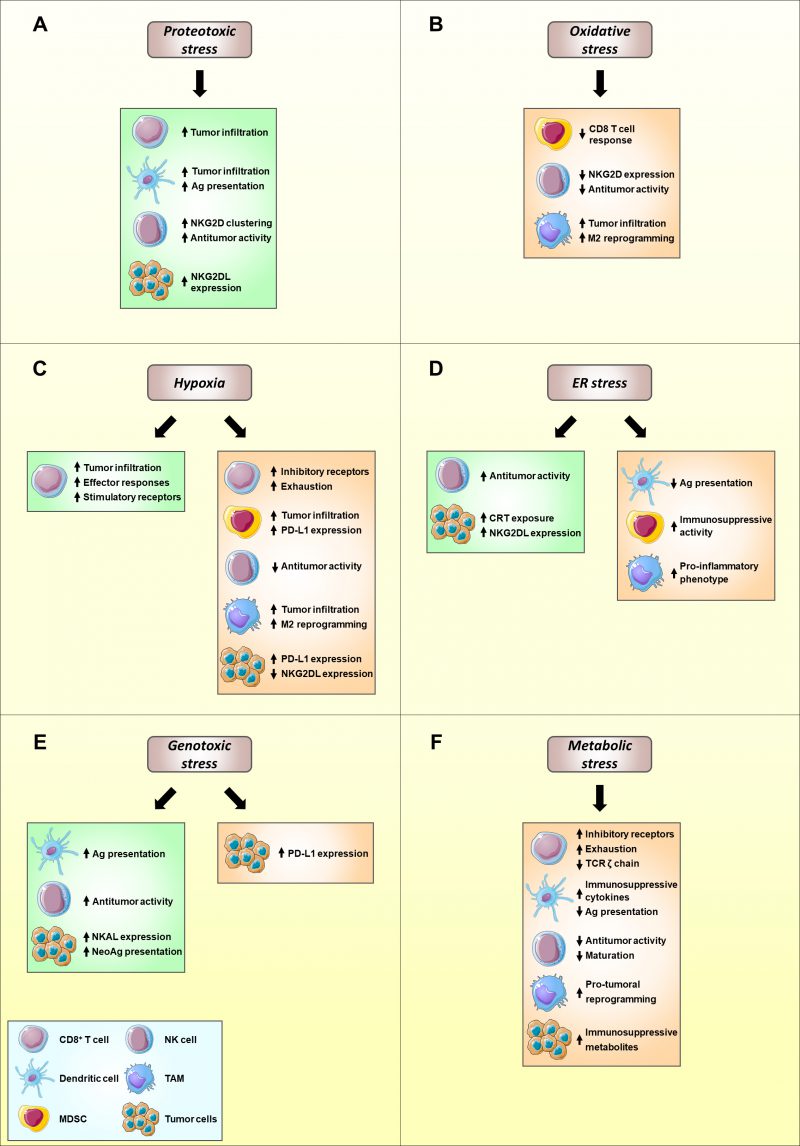Back to article: Immunosurveillance of cancer cell stress
FIGURE 1: Modulation of immune function and tumor immunosurveillance by cell stress. The distinct signaling pathways implicated in the adaptation to cell stress can positively modulate antitumor immune responses (green), thus favoring tumor elimination, or can be detrimental to cancer immunosurveillance (orange), promoting tumor development and growth. The balance between both effects ultimately defines the crosstalk between the immune system and the tumor. Proteotoxic (A) and genotoxic (E) stress predominantly stimulate effector immune subsets, potentiating the recognition and killing of tumor cells. Oxidative (B) and metabolic (F) stress mainly impair effector immune cell functions and promote the functions of protumoral immune subsets, such as MDSCs, therefore favoring tumor progression. Hypoxia (C) and ER stress (D) exert a double-edge role in cancer immunosurveillance. Ag, antigen; CRT, calreticulin; MDSC, myeloid-derived suppressor cell; NKG2DL, NKG2D ligand; TAM, tumor-associated macrophage; TME, tumor microenvironment. Illustrations adapted from Servier Medical Art (http://www.servier.fr/servier-medicalart).

